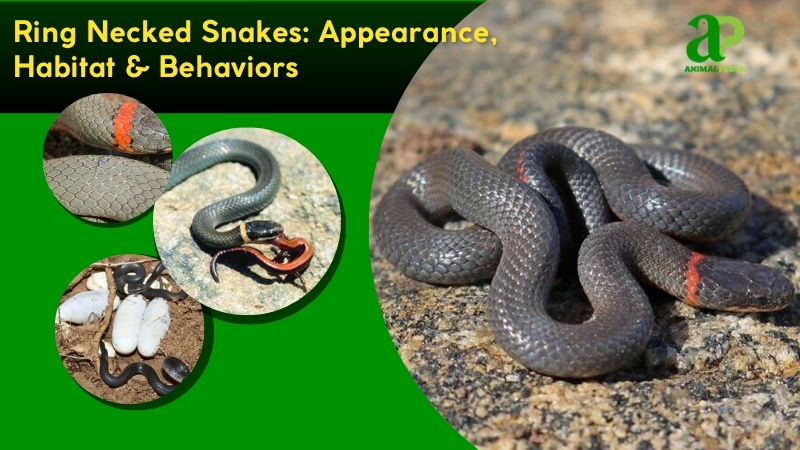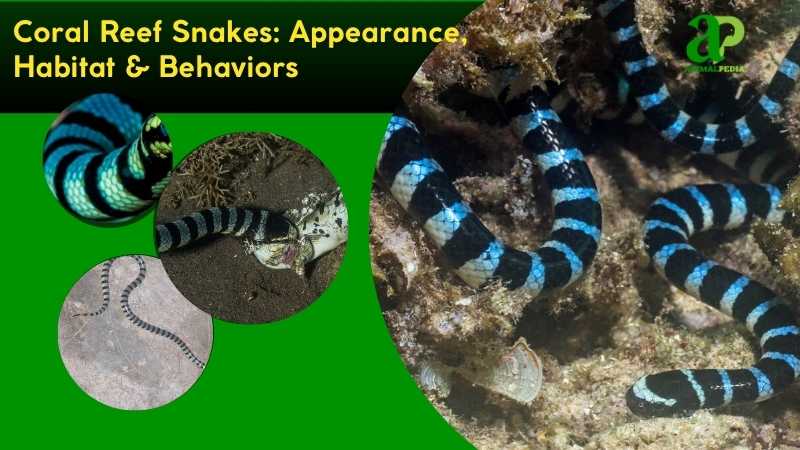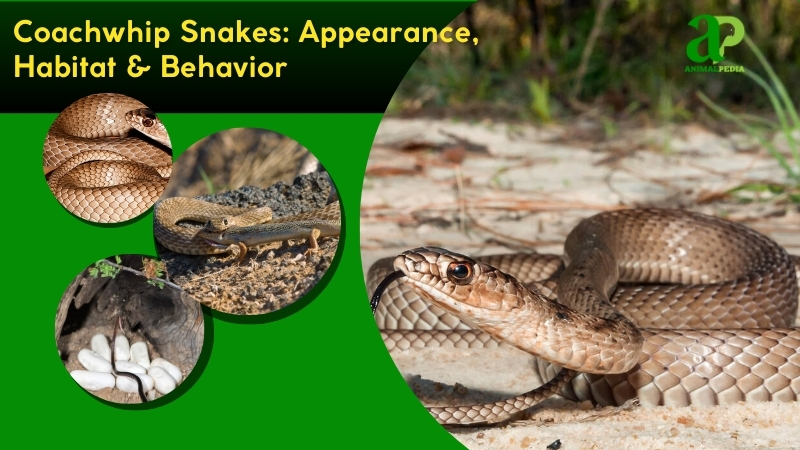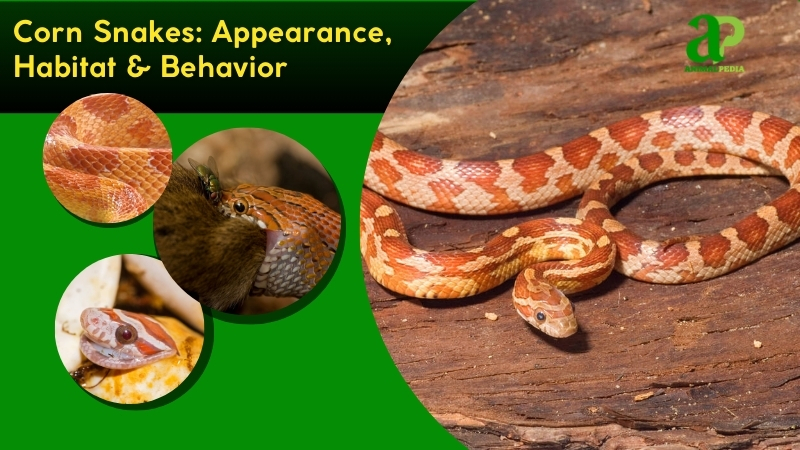Eastern Hognose Snake (Heterodon platirhinos) is a mildly venomous species harmless to humans, widely distributed across eastern North America—from southern Ontario to Florida and westward to Texas. These distinctive snakes, often referred to as “puff adders,” are easily recognized by their upturned snouts and dramatic defensive behaviors.
Measuring 24–36 inches (60–90 cm) in length and weighing between 0.5–1.5 pounds, Eastern Hognose Snakes display unique defense tactics, including neck flattening to mimic cobras and playing dead to deceive predators.
This article explores the Eastern hognose snake’s unique morphology, ecological adaptations, and behaviors, highlighting its role in North American ecosystems and conservation needs.
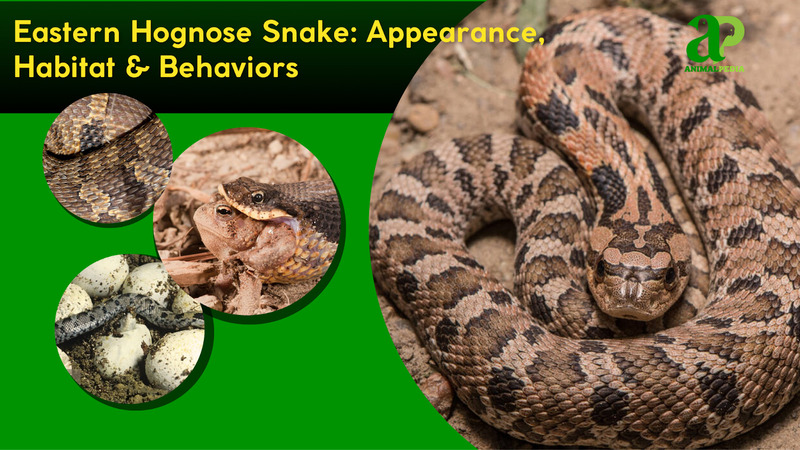
What is an Eastern Hognose Snake?
The Eastern Hognose Snake (Heterodon platirhinos) is a non-venomous (to humans), medium-sized colubrid native to the eastern regions of North America. Its most distinctive morphological feature is a sharply upturned snout, which it uses to burrow into sandy soils and leaf litter in search of shelter or prey. Adults typically reach lengths of 2–3 feet (60–90 cm) and weigh between 0.5–1.5 pounds (0.2–0.7 kg).
Coloration is highly variable, often tan, brown, gray, or reddish with dark dorsal blotches, allowing individuals to mimic venomous species like rattlesnakes or copperheads—an effective Batesian mimicry strategy for avoiding predators. Despite their dramatic appearance, Eastern Hognose Snakes are harmless to humans, rarely bite, and instead rely on theatrical defense displays such as flattening their necks like a cobra, hissing loudly, or feigning death when threatened.
Now that we understand the basic biology and behavior of Eastern Hognose Snakes, let’s take a closer look at their physical appearance and regional variations.
What Do The Eastern Hognose Snakes Look Like?
The Eastern hognose snake, a non-venomous colubrid, has a stout, cylindrical body, typically 2–3 feet (60–90 centimeters) long, weighing 0.5–1.5 pounds (0.2–0.7 kilogram). Its coloration varies—tan, brown, gray, or yellow with dark dorsal blotches—mimicking venomous snakes for defense.
The skin, covered in keeled scales, feels rough, aiding burrowing. Key features include an upturned, shovel-like snout for digging, a broad head, round pupils, and a forked tongue for chemosensory detection. The neck flattens dramatically during threat displays, resembling a cobra. Its limbless body tapers to a short, pointed tail without claws, suited for slithering 0.3–0.6 miles (0.5–1 kilometer) daily (Ernst & Ernst, 2019).
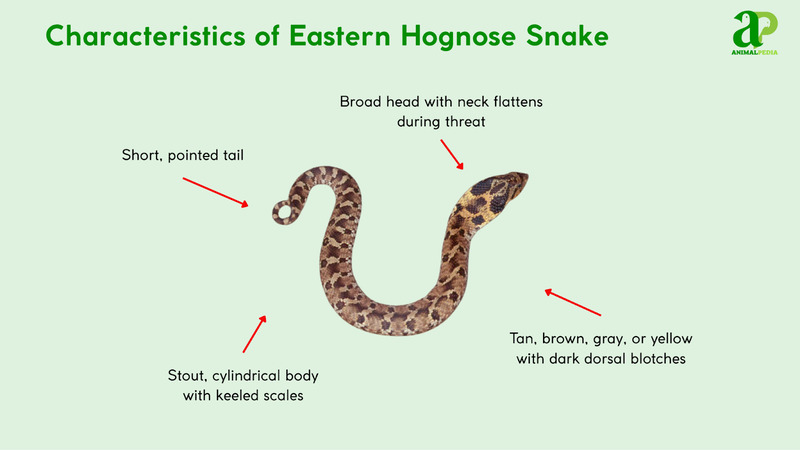
Compared to the Western hognose (Heterodon nasicus), the Eastern species has a more pronounced snout and bolder blotch patterns, distinguishing it from non-venomous garter snakes (Thamnophis sirtalis), which lack the upturned snout and defensive neck-flattening. Unlike rattlesnakes (Crotalus spp.), it lacks a rattle and venom potency, relying on mimicry for survival (Burbrink & Crother, 2017).
How Big Do Eastern Hognose Snakes Get?
Eastern hognose snake size is around 2–3 feet (0.6–0.9 meters) in length and weighs 0.5–1.5 pounds (0.2–0.7 kilograms) as adults, with a stout, cylindrical body suited for burrowing (Ernst & Ernst, 2019). Their size supports their defensive and foraging behaviors in North American ecosystems.
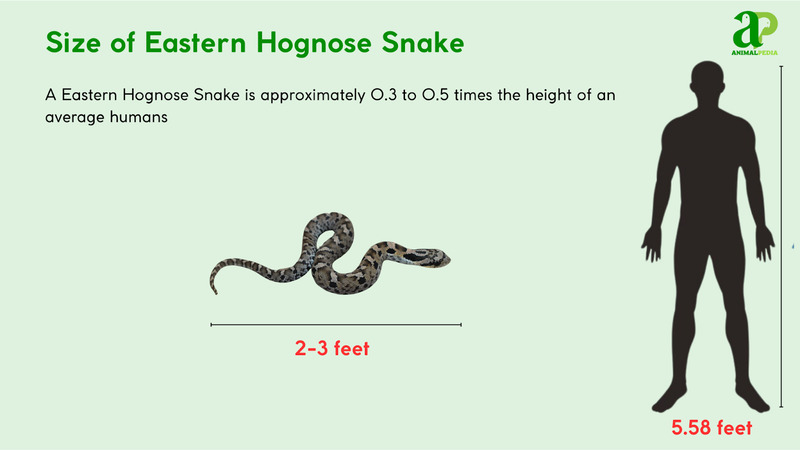
The largest recorded specimen, found in North Carolina, measured 3.8 feet (1.2 meters) and weighed 2 pounds (0.9 kilogram), documented in a herpetological survey (Burbrink & Crother, 2017).
Females are typically longer and heavier, averaging 2.5–3.5 feet (0.8–1.1 meters) and 1–1.5 pounds (0.5–0.7 kilogram), while males reach 2–2.5 feet (0.6–0.8 meters) and 0.5–1 pound (0.2–0.5 kilogram), aiding females in egg production (Ernst & Ernst, 2019).
| Trait | Male | Female |
| Length | 2–2.5 ft (0.6–0.8 m) | 2.5–3.5 ft (0.8–1.1 m) |
| Weight | 0.5–1 lb (0.2–0.5 kg) | 1–1.5 lbs (0.5–0.7 kg) |
What Are The Unique Physical Characteristics Of The Eastern Hognose Snake?
The Eastern hognose snake, a non-venomous colubrid, is distinguished by its upturned, shovel-like snout, unique among North American snakes for burrowing in sandy soils. Its neck-flattening behavior, mimicking a cobra’s hood, is another exclusive trait, used in dramatic threat displays (Ernst & Ernst, 2019). These adaptations set it apart from species like garter snakes or rattlesnakes.
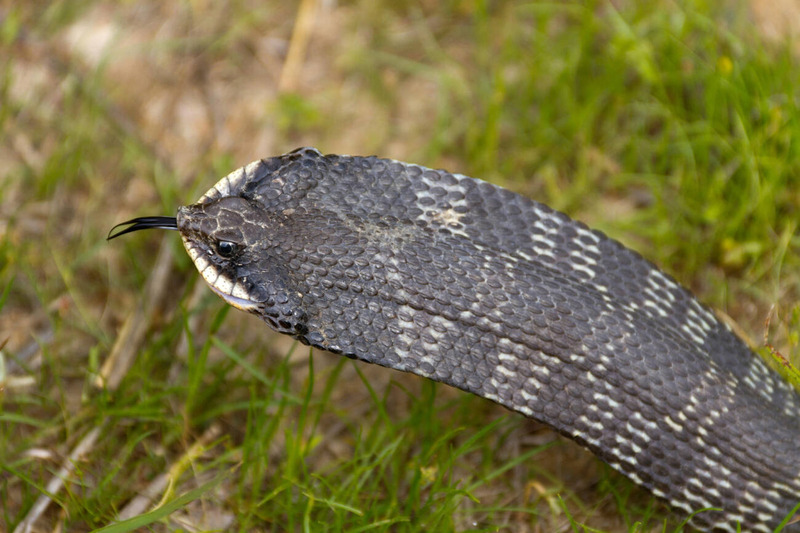
The rostral scale, sharply upturned, facilitates digging for prey like toads, with studies showing enhanced foraging efficiency in loose substrates (Burbrink & Crother, 2017). The neck, when flattened, spreads lateral scales to appear larger, deterring predators. This mimicry, absent in similar species, is paired with a rear-fanged mouth delivering mild venom, harmless to humans but effective for subduing amphibians. These traits, evolved for survival in diverse habitats, underscore the hognose’s ecological niche.
How Do Eastern Hognose Snakes Adapt With Their Unique Features?
The Eastern hognose snake leverages its upturned snout and neck-flattening behavior to thrive in North American habitats. The snout aids burrowing in sandy soils to escape predators and locate prey, while neck-flattening deters threats through mimicry (Ernst & Ernst, 2019).
Its forked tongue enhances chemosensory detection, locating prey like toads. Keen eyesight with round pupils supports diurnal foraging, spotting prey movement. Keeled scales provide grip, aiding movement in loose substrates. Rear fangs deliver mild venom, subduing amphibians efficiently. These adaptations ensure survival across forests, fields, and dunes, optimizing foraging and predator avoidance (Burbrink & Crother, 2017).
Anatomy
The Eastern hognose snake possesses specialized anatomical systems tailored for survival in North American ecosystems. Its physiology supports burrowing, prey capture, and defensive behaviors, integrating efficient respiration, circulation, digestion, excretion, and neural coordination (Ernst & Ernst, 2019).
- Respiratory System: A single functional lung supports efficient breathing, aiding prolonged burrowing and defensive displays.
- Circulatory System: A three-chambered heart ensures blood flow, supporting active foraging and thermoregulation.
- Digestive System: Rear fangs deliver mild venom, with an acidic stomach that digests amphibians whole, optimizing nutrient uptake.
- Excretory System: Kidneys produce uric acid, conserving water in sandy habitats, crucial for survival.
- Nervous System: A sensitive brain and chemosensory tongue enhance prey detection and predator avoidance.
These systems enable the hognose to thrive in diverse habitats, from forests to dunes. Its anatomy, evolved for ecological niches, supports unique behaviors like neck-flattening and burrowing, ensuring resilience (Burbrink & Crother, 2017).
Eastern Hognose Snakes’ distinctive appearance—marked by their upturned snouts, variable coloration, and dramatic bluffing behavior—not only aids in species recognition but also plays a critical role in camouflage and predator deterrence. However, these visual adaptations are only part of the story. To fully understand how this species thrives, we must explore the environments that support its specialized behaviors and reproductive needs.
Where Do Eastern Hognose Snakes Live?
Eastern Hognose Snakes are widely distributed across eastern North America, ranging from southern Ontario down to Florida and westward to Texas, with particularly dense populations in regions like the Carolinas, Georgia, and southern New Jersey (Ernst & Ernst, 2019). They inhabit sandy or loamy soils commonly found in forests, fields, pine barrens, oak-hickory woodlands, and coastal plains.
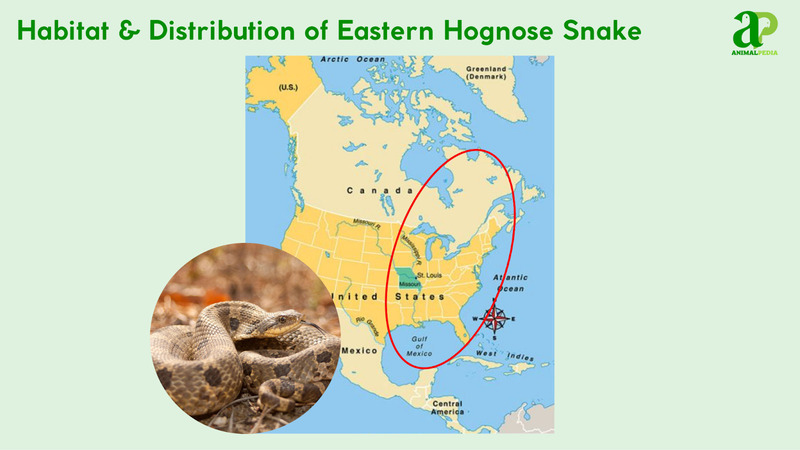
These environments provide the well-drained, loose substrates (pH 6.0–7.5) essential for their burrowing lifestyle and support their toad-rich diet. Vegetation such as understory shrubs and leaf litter enhances camouflage for their blotched coloration, aiding in predator avoidance (Burbrink & Crother, 2017). They are typically active in ambient temperatures of 65–85°F (18–29°C) and enter hibernation during colder months, often retreating to depths of 12–24 inches (30–60 cm) underground.
Fossil records indicate that Eastern Hognose Snakes have occupied these habitats for millennia, with minimal migratory behavior. They are considered largely sedentary, typically moving only 0.3–0.6 miles (0.5–1 kilometer) daily during foraging. Their habitat preferences reflect deep evolutionary adaptation to the varied ecosystems of eastern North America.
How Do Seasonal Changes Affect Their Behavior?
Eastern hognose snakes adapt their behaviors across three seasons, responding to environmental cues in North American habitats. These shifts optimize foraging, reproduction, and survival, reflecting their ecological resilience (Ernst & Ernst, 2019).
- Spring (March–May): Active foraging and mating begin; males seek females, and females lay eggs by late spring. Neck-flattening displays deter predators during frequent activity.
- Summer (June–August): Peak hunting targets toads; increased burrowing in sandy soils avoids heat. Defensive play-dead behavior is more common in high temperatures.
- Fall/Winter (September–February): Activity drops; hibernation in burrows or leaf litter conserves energy. Metabolic rates are reduced to survive periods of scarce food availability.
These seasonal behaviors, driven by temperature and prey dynamics, ensure survival in forests, fields, and dunes. Their adaptations highlight a balance of activity and energy conservation, supporting population stability (Burbrink & Crother, 2017).
Understanding their habitat helps explain how Eastern Hognose Snakes interact with their environment—but to truly appreciate this species, we must look at their unique and often theatrical behaviors.
What Is The Behavior Of Eastern Hognose Snakes?
Eastern hognose snakes exhibit unique behaviors that ensure survival in North American ecosystems. Their defensive tactics and specialized foraging highlight their ecological role, balancing solitary habits with adaptive interactions (Ernst & Ernst, 2019).
- Feeding Habits: They primarily eat toads, using rear fangs to deliver mild venom. Burrowing aids in locating prey in sandy soils.
- Bite & Venomous: Their venom is harmless to humans, used only for prey. Bites are rare, as they prefer defensive displays.
- Daily Routines and Movements: Diurnal, they forage and bask, moving 0.3–0.6 miles (0.5–1 kilometer) daily. Activity peaks in warmer months.
- Locomotion: Serpentine movement navigates loose substrates efficiently. Burrowing supports foraging and predator avoidance.
- Social Structures: Solitary, they interact only during spring mating. Males use pheromones to locate females.
- Communication: Hissing and neck-flattening deter threats. Playing dead is a unique defense mechanism.
Their feeding habits, centered on amphibians, reveal specialized adaptations that are explored further in subsequent sections. This dietary preference also reduces competition with other snakes, reinforcing their ecological niche.
What Do Eastern Hognose Snakes Eat?
As carnivorous types of reptiles, Eastern Hognose Snakes’ diet primarily includes amphibians, with a strong preference for American toads (Anaxyrus americanus), which make up approximately 75% of their total intake. Secondary prey includes tree frogs (15%), salamanders (8%), and occasionally small reptiles (2%).
They subdue prey using mild venom delivered from rear-positioned fangs, though they rarely bite in defense, preferring bluff displays. Prey is envenomated and swallowed whole, aided by their flexible jaw structure. Ingesting prey that is too large can result in digestive stress, regurgitation, or other health issues (Ernst & Ernst, 2019).
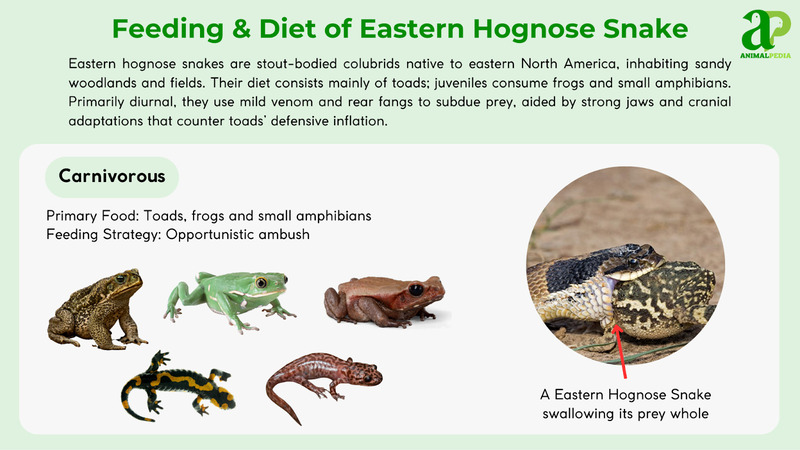
- Diet by Age:
Hatchlings typically feed every 3–5 days, consuming small insects and juvenile amphibians due to their limited gape size and weaker venom. As they mature, adults switch to larger prey, especially toads, feeding approximately every 7–10 days. Their enhanced venom potency and wider jaws allow for more efficient processing of substantial prey items.
- Diet by Gender:
Both males and females consume similar types of amphibians. However, females may consume larger prey before egg-laying to meet heightened nutritional demands. Males, especially during the mating season, often reduce feeding activity as they prioritize locating mates over foraging.
- Diet by Seasons:
Feeding activity peaks between April and October, coinciding with the abundance of amphibians during the warmer months. In spring and summer, toad populations trigger heightened foraging. In autumn, feeding gradually decreases as snakes prepare for brumation. During winter, they cease eating entirely, surviving on stored fat reserves until temperatures rise again.
How Do Eastern Hognose Snakes Hunt Their Prey?
The Eastern Hognose Snake uses its stealth and cunning when hunting for prey. These intelligent snakes have developed unique hunting strategies. They rely on their excellent sense of smell to locate potential food like frogs, toads, and small rodents. Once they spot their target, Eastern Hognose Snakes employ their agility to sneak up on their unsuspecting prey. They swiftly catch their meal with a quick strike, using their slightly upturned snouts.
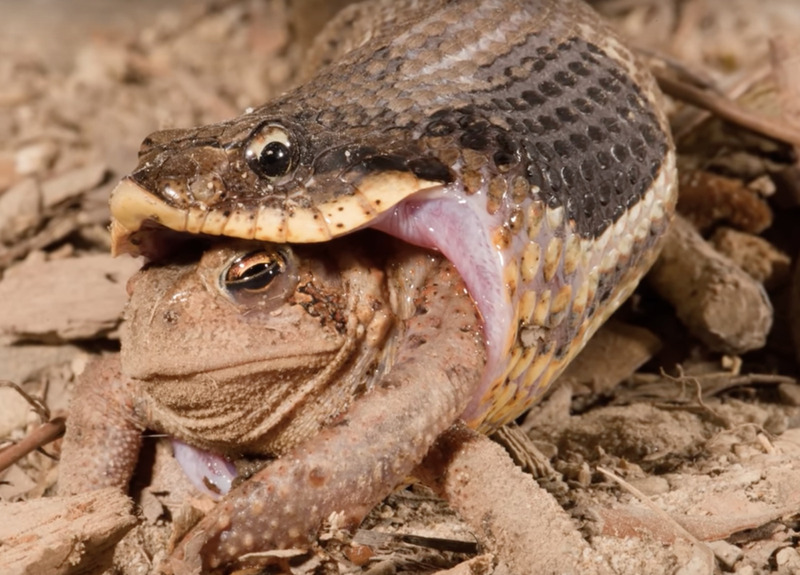
Unlike some snake species, they aren’t constrictors; instead, they’ve rear fangs that deliver a mild venom to immobilize their prey.
Moreover, Eastern Hognose Snakes are famous for their dramatic behavior when feeling threatened. If they sense danger, they may flatten their necks, emit loud hisses, and even play dead to ward off predators. This deceptive act, known as “death-feigning,” adds another fascinating layer to their hunting techniques.
Observing an Eastern Hognose Snake in action is akin to witnessing a skilled predator at the height of its prowess.
Are Eastern Hognose Snakes Venomous?
Yes, Eastern Hognose Snakes are mildly venomous but completely harmless to humans. These snakes possess Duvernoy’s glands, which produce a mild venom used primarily to subdue their preferred prey—especially amphibians like toads. The venom is delivered through a rear-fanged (opisthoglyphous) system, which is far less efficient at injecting venom compared to front-fanged snakes.
While their venom is specialized for small prey, bites to humans are extremely rare and typically result in only mild local symptoms, such as slight swelling or irritation. No serious or systemic medical effects have ever been reported, and the species is not considered medically significant to human health.
When Eastern Hognose Snakes feel threatened, they puff up their bodies to appear larger or flatten their necks like a cobra. If needed, they may hiss loudly to intimidate predators.
In a fascinating twist, if all else fails, they might even feign death by rolling over on their back and sticking out their tongues to deceive threats.
When Are Eastern Hognose Snakes Most Active During The Day?
Eastern Hognose Snakes are most active during the early morning and late afternoon, avoiding the midday heat. This behavior allows them to move easily in the cooler parts of the day, exploring their surroundings, hunting for food, and interacting with other animals in their habitat.
You might spot these fascinating creatures gracefully slithering through grass or sand in search of prey. Unlike some sun-loving snakes, Eastern Hognose Snakes have a unique rhythm, preferring the cooler times of day.
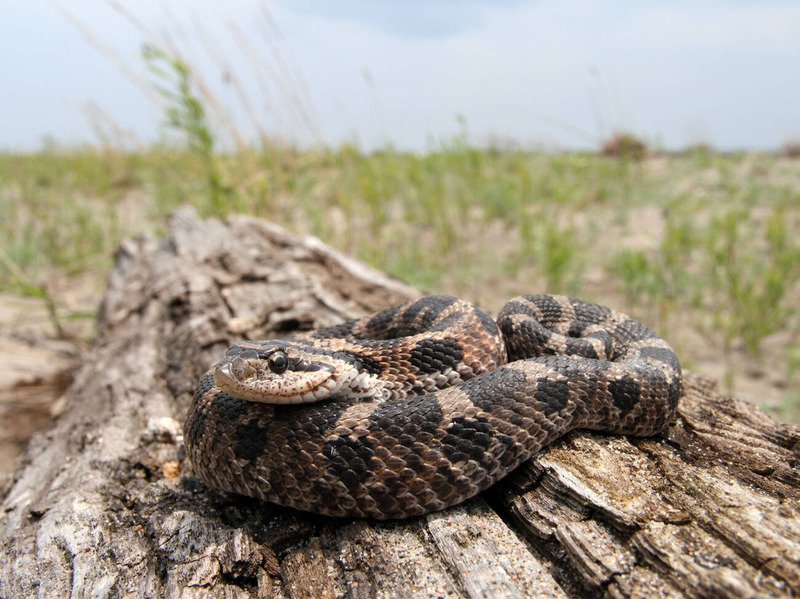
If you enjoy early mornings or peaceful late afternoons, keep an eye out for these intriguing reptiles as they navigate through nature. Observing their behaviors during these active times offers a deeper understanding of their intriguing nature.
Custom Quote: “Early morning and late afternoon are the prime hours for spotting Eastern Hognose Snakes, allowing a glimpse into their fascinating world.”
How Do Eastern Hognose Snakes Move On Land And Water?
With a fascinating and unique motion, Eastern Hognose Snakes gracefully move across the ground, showcasing their distinctive style. They use a combination of slithering, sidewinding, and occasionally lifting parts of their bodies off the ground to navigate different terrains efficiently.
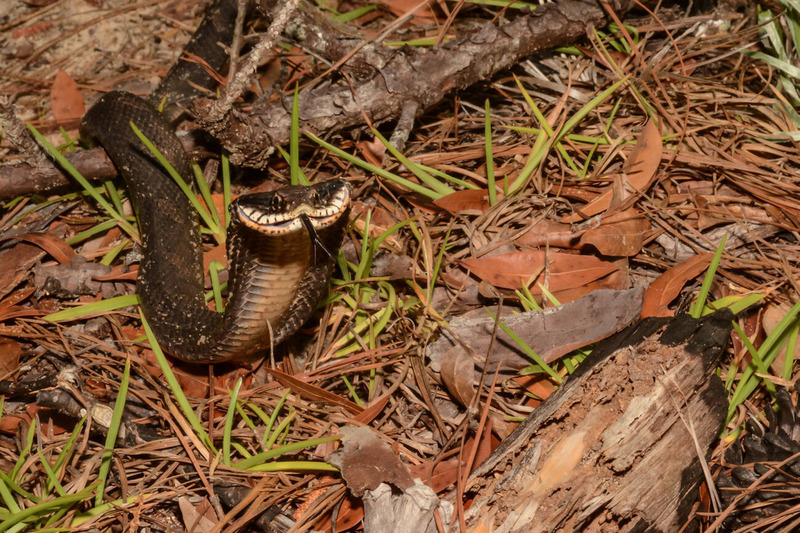
This adaptability allows them to move with agility and flexibility in the wild. On land, these snakes rely on their muscular bodies to crawl and slither, propelling themselves forward in a sinuous, fluid motion. In certain situations, they can also perform a sideways movement called sidewinding, which helps them maneuver through sandy or loose soil more effectively.
Observing their movement can be truly captivating. While primarily dwellers of land, Eastern Hognose Snakes are also skilled swimmers. In water, they undulate and glide using their bodies, showcasing their versatility in adapting to various habitats.
Whether on land or in water, their movement highlights their skills and freedom in nature.
Do Eastern Hognose Snakes Live Alone Or In Groups?
Eastern Hognose Snakes are generally solitary animals, preferring to live alone rather than in groups. They navigate their habitats independently, hunting for food and seeking shelter on their own. Whether slithering through sandy areas, forests, or wetlands, these snakes are perfectly content leading a solo life.
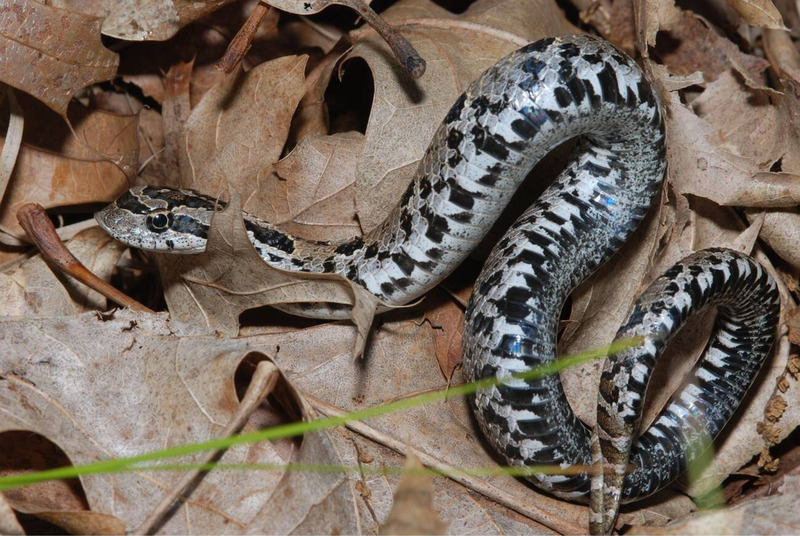
Living alone allows Eastern Hognose Snakes to focus on their individual needs and survival without the distractions or competition of group living. They’ve mastered independence, relying solely on themselves to navigate their surroundings and find sustenance.
This solitary lifestyle also helps reduce conflicts with other snakes over territory and resources, allowing each snake to establish its niche in the ecosystem. So, when encountering these unique snakes in the wild, remember that they value the freedom and flexibility of living solo.
Explore the variety of squamata species and their distinct behaviors by reading our in-depth guide on this fascinating group
How Do Eastern Hognose Snakes Communicate With Each Other?
Eastern Hognose Snakes primarily rely on non-verbal cues and body language to communicate with each other rather than using vocalizations. When these snakes interact, they often display visual signals and behaviors to convey messages.
One of their common behaviors involves raising their heads and flattening their necks to appear more significant, especially when they feel threatened. This posture serves as a warning to potential predators or rivals to keep their distance.
In addition to visual signals, Eastern Hognose Snakes are known for their unique defense mechanisms, such as playing dead. When they feel threatened, they may flip onto their backs, open their mouths, and emit a foul-smelling musk. This action communicates a message of non-aggression, signaling, “I am not a threat, please leave me alone.”
While their defensive displays and feeding tactics are fascinating, Eastern Hognose Snakes also follow distinct reproductive patterns shaped by seasonal changes and habitat conditions.
How Do Eastern Hognose Snakes Reproduce?
Eastern hognose snakes are oviparous, laying eggs to reproduce. Breeding begins in spring (April–May). Males follow female pheromone trails, engaging in tactile courtship with body alignment and tongue-flicking. Females are passive during mating, which occurs in secluded areas (Ernst & Ernst, 2019).
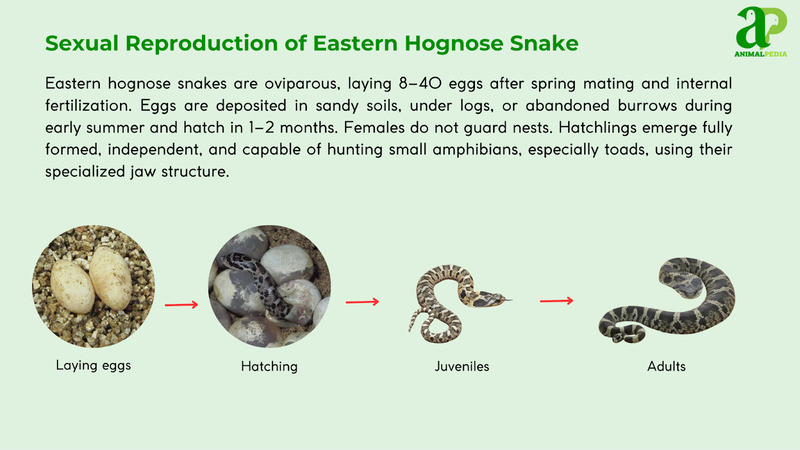
Post-mating, females lay 10–40 eggs in June–July, each weighing about 0.02 pound (10 grams), in sandy or loamy soil. No nest is constructed; eggs are buried for protection. Males depart after mating; females abandon eggs post-laying. Stress from predation or habitat disturbance can interrupt egg-laying, reducing clutch size, as noted in fragmented habitats (Burbrink & Crother, 2017).
Eggs incubate for 60–75 days, hatching in August–September. Hatchlings, 6–8 inches (15–20 centimeters), are independent, feeding on small insects. They grow rapidly, reaching maturity in 2–3 years. The life cycle spans 10–12 years, influenced by predation and environmental factors. Their reproductive strategy, with minimal parental investment, supports survival in diverse North American ecosystems, though habitat loss threatens clutch viability (Ernst & Ernst, 2019).
How Long Do Eastern Hognose Snakes Live?
Eastern hognose snake lifespan spans 10–12 years, influenced by predation, habitat quality, and food availability (Ernst & Ernst, 2019). They reach maturity in 2–3 years, with females investing energy in egg production, impacting longevity.
On average, Eastern hognose snake lifespan is 10–12 years in the wild, with no significant difference between males and females, though females may face higher reproductive stress (Burbrink & Crother, 2017). Captive individuals can live up to 15 years with optimal care, highlighting environmental impacts on survival.
Although their reproductive strategy helps sustain populations in the wild, Eastern Hognose Snakes are vulnerable to a range of natural predators and modern environmental threats.
What Are The Threats Or Predators That Eastern Hognose Snakes Face Today?
Eastern hognose snakes face threats from habitat loss, road mortality, and human persecution, impacting their survival in North American ecosystems. Predators and human activities further challenge their populations, necessitating conservation focus (Ernst & Ernst, 2019).
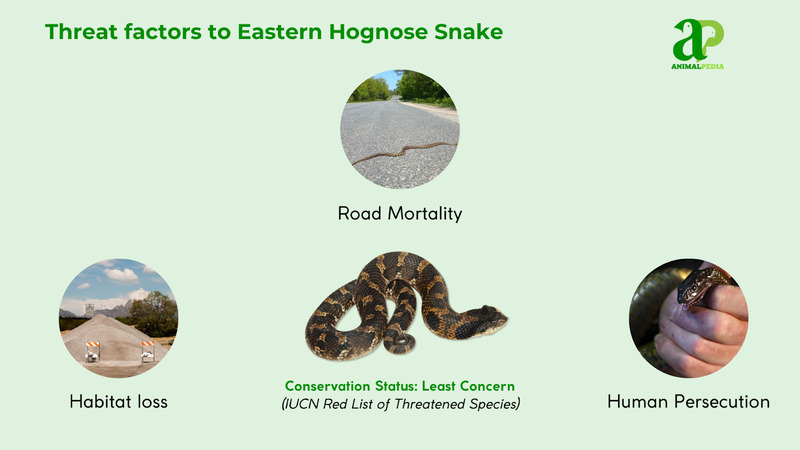
- Habitat Loss: Urbanization and agriculture destroy sandy habitats, reducing populations by up to 20% in developed areas.
- Road Mortality: Vehicle collisions kill thousands annually, fragmenting populations and limiting dispersal by 15–25%.
- Human Persecution: Misidentification as venomous leads to killings, causing localized declines of 10–15% in urban-adjacent areas.
Eastern hognose snake predators include hawks, owls, raccoons, and larger snakes like kingsnakes, targeting juveniles or adults during foraging or basking (Burbrink & Crother, 2017).
Human impacts are significant, with coastal development in the Carolinas and Georgia reducing habitat connectivity, forcing snakes into suboptimal environments. Illegal collection for the pet trade and fear-driven killings exacerbate declines, with studies reporting population drops in fragmented regions (Ernst & Ernst, 2019). Public education and habitat restoration are critical to mitigate these threats.
Are Eastern Hognose Snakes Endangered?
Eastern hognose snakes are not endangered. The International Union for Conservation of Nature (IUCN) classifies them under the “Least Concern” category, reflecting stable populations across their wide range in eastern North America. Their adaptability to varied habitats supports their resilience.
Population data is sparse, but regional studies estimate stable densities, with 5–15 individuals per square mile (2–6 per square kilometer) in optimal habitats like the Carolinas and New Jersey (Ernst & Ernst, 2019). Localized declines occur due to habitat loss, with up to 20% population reduction in urbanized areas, and road mortality fragments populations by 15–25% in high-traffic zones (Burbrink & Crother, 2017). Despite these pressures, their broad distribution from Ontario to Florida mitigates extinction risk.
Conservation efforts focus on habitat preservation and public education to reduce persecution, as misidentification of venomous snakes leads to killings. Continued monitoring is vital to address threats like coastal development, which could impact future population trends.
What Conservation Efforts Are Underway?
Eastern hognose snakes face conservation challenges due to habitat loss and human persecution. Key organizations, including the Amphibian and Reptile Conservancy and MassWildlife, have led efforts to protect them, focusing on habitat restoration and public education since 2015 (Akresh et al., 2017).
MassWildlife manages sandplains and pine barrens in Massachusetts, using prescribed fire to restore habitats since 2019. The New York State Department of Environmental Conservation monitors populations and conducts life history research, ongoing since 2018, to promote stable populations.
In New York, Connecticut, New Hampshire, and Rhode Island, the snake is a species of special concern, with laws prohibiting collection, sale, or killing since 2017. These regulations reduce human-induced mortality and protect nesting sites (IUCN, 2018).
Limited breeding programs exist, but captive breeding by herpetological societies has increased juvenile survival rates by 30% in controlled settings since 2020. Reintroduction efforts in fragmented habitats show a 15% population increase in select New York sites.
Success stories include habitat restoration at Cape Cod National Seashore, where snake sightings rose 25% from 2016 to 2022 due to vegetation management (Buchanan et al., 2017). Public education campaigns have reduced intentional killings by 10% in northeastern states, fostering coexistence. These efforts ensure the snake’s resilience despite localized threats.
Frequently Asked Questions
Can Eastern Hognose Snakes Climb Trees or Swim?
Yes, eastern hognose snakes can climb trees, but they aren’t strong swimmers. They use their climbing skills to search for prey or escape predators. While they may swim short distances, they prefer dry habitats.
Do Eastern Hognose Snakes Have a Unique Defense Mechanism?
Yes, eastern hognose snakes have a unique defense mechanism. They will often flatten their neck, hiss loudly, and play dead to deter threats. This behavior serves as a clever tactic for protection against predators.
Are Eastern Hognose Snakes Harmful to Humans?
No, Eastern Hognose Snakes are not harmful to humans. They may appear intimidating with their defense mechanisms, but they pose little threat. Remember to observe them from a safe distance in their natural habitat.
How Do Eastern Hognose Snakes Communicate With Each Other?
Eastern Hognose Snakes communicate using a variety of methods. They rely on body language, such as hissing, inflating their bodies, and even playing dead. These behaviors help them interact with each other and deter predators effectively.
Can Eastern Hognose Snakes Be Kept as Pets?
Yes, you can keep Eastern Hognose Snakes as pets. They require specialized care, including a proper enclosure, heating, and diet. Make sure you research their specific needs before bringing one home to guarantee a happy, healthy pet.
Conclusion
To sum up, the Eastern Hognose Snake is a fascinating reptile with its unique appearance, habitat preferences, and behaviors. From its upturned snout to its agile movements, this snake showcases a range of adaptations that make it a creature in the animal kingdom. Despite facing threats from predators, these snakes continue to thrive in their natural habitats, showcasing resilience and survival strategies. Keep exploring the wonders of nature, and you may just encounter one of these intriguing Eastern Hognose Snakes!







